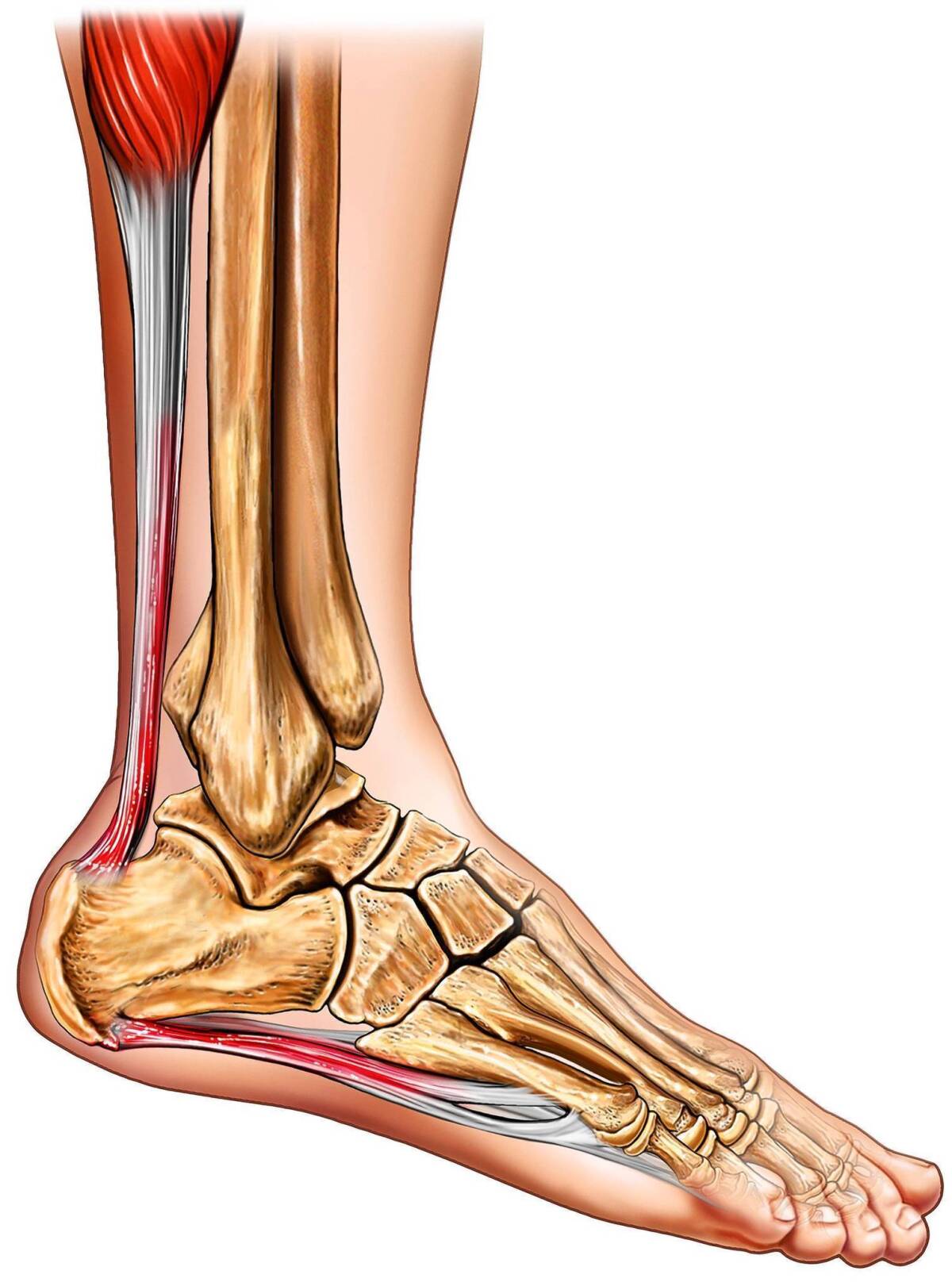Heel pain ‘epidemic,’ but doctors show steps to deal with plantar fasciitis

Plantar fasciitis. If you haven’t had to deal with it personally, just ask around. Chances are you know lots of people who can describe it in great detail: stabbing heel pain and agonizing steps followed by a frustratingly slow recovery. Plantar fasciitis — an inflammation of the plantar facsia, a thick band of tissue that runs along the arch from the heel to the toes — has become so ubiquitous that podiatrists can practically make the diagnosis before a patient even sets foot in their office.
“I see 18 to 20 patients a day with plantar fasciitis. Heel pain is epidemic,” says Michael King, a podiatrist practicing in Fall River, Mass., and the immediate past president of the American Podiatric Medical Assn. He can only guess how many more cases are out there. “Some people just tolerate the pain and try to get by.”
Like Pau Gasol, perhaps. The L.A. Laker had been bothered all season by plantar fasciitis in his right foot, but in a game last month he tore the plantar fascia and was expected to be out of play for about two months. “It’s not uncommon for it to occur for a patient who has had plantar fasciitis in the past,” said Keith Feder, a Manhattan Beach orthopedic surgeon.
Plantar fasciitis has become a mark of modern life, but it’s far from inevitable. According to King, heel pain could become a relative rarity, assuming we are willing to take better care of our feet.
It’s definitely something you’d rather avoid given the choice. If your plantar fascia gets inflamed, you’ll probably feel knife-like heel pain as soon as your feet hit the floor in the morning. The pain generally eases throughout the day, but some people wince with practically every step.
Blame the shoes
Elizabeth Kurtz, a podiatrist who practices in Chicago, says that many people punish their feet with flat, flimsy shoes that don’t support the arch. “Flip-flops seem to be a major source of foot pain,” she says. Worn-out shoes that have lost their cushioning are another culprit.
“People walk into the office wearing shoes that they should have replaced months ago,” she says.
King has noticed similar trends. “I see a lot of people with pain in the fall because they’ve been wearing cheap flip-flops all summer,” he says.
Plantar fasciitis often strikes runners and serious walkers, especially if they’ve recently started going much faster or farther than their feet were accustomed to, says Jay Hertel, professor of sports medicine at the University of Virginia in Charlottesville. It also shows up in a lot of sedentary middle-aged people carrying a little extra weight, he says.
Whether they took the hard or easy road to plantar fasciitis, people are desperate for relief. Many try wearing heel cushions under the sore spot, but that misses the point, King says. “Heel cushions have little effect,” he says. “It’s an arch problem, not a heel problem.”
Insoles ease pain
Orthotic insoles that support the arch can definitely help ease the pain, Hertel says. You could buy over-the-counter versions at any drugstore (Dr. Scholl’s is one popular brand) or get a custom-made device from a doctor. But a prescription-strength insole may not be a real upgrade. A 2009 study published by Hertel and colleagues in the journal Physical Therapy and Sport found that people with plantar fasciitis enjoyed similar levels of relief no matter where their insole came from.
“It didn’t seem to matter if they were over-the-counter or custom-made,” Hertel says. “The results were the same. And over-the-counter products are a lot cheaper.”
More than anything, King says, people with plantar fasciitis just have to give their feet a chance to recover on their own. He has a few simple guidelines. First of all: no going barefoot, and no flimsy flip-flops. (Flip-flops or sandals with arch support are fine.) He encourages patients to put on footwear with some arch support before even getting out of bed.
Runners or walkers with plantar fasciitis should definitely make sure their footwear is up to the task. “If you exercise regularly, you need to change your shoes every three or four months,” King says. “Even if they look great on the outside, the support on the inside can wear out.”
For treatment, stretching is frequently recommended, but there are other options. A growing number of foot doctors offer to treat plantar fasciitis with “shock wave” therapy, which involves blasting the heel with a high-intensity ultrasound beam. King says that the technology — which, when pointed elsewhere, can also be used to break up kidney stones — can reduce pain and inflammation in the heel, although nobody’s quite sure why. Likewise, some doctors treat plantar fasciitis with low-level lasers. Some say it works, but King notes that the procedure hasn’t been thoroughly studied and the evidence behind it is very slim.
Some people resort to an operation that cuts away overly tight parts of the fascia. But King says very few of his patients ever end up going under the knife. “Almost nobody needs surgery,” he says.
In other words, if you suffer from knife-like heel pain, you probably won’t need a real knife in your heel. Now that’s a relief.




